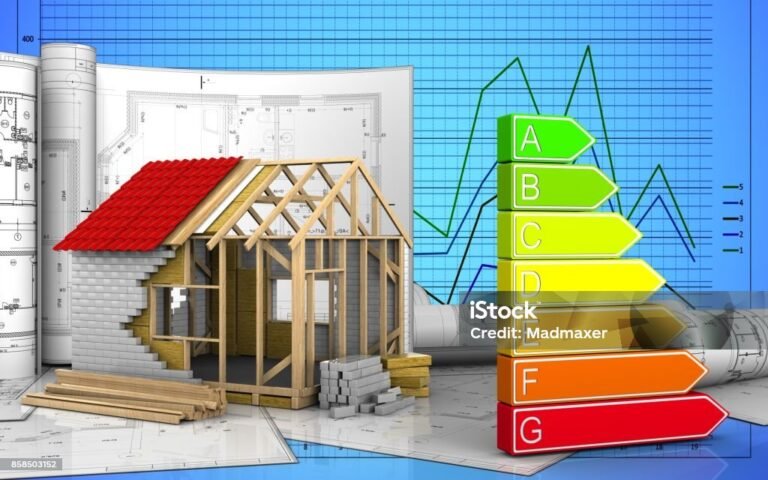Key Takeaways:
- Proper insulation is crucial for improving energy efficiency and increasing comfort levels in homes.
- Different types of insulation materials are suited for various parts of the home.
- Energy efficiency contributes to reducing environmental footprint and lowers utility bills.
- Professional insulation services can provide personalized solutions tailored to specific needs and structures.
Table of Contents
- Introduction to Insulation
- Types of Insulation Materials
- Benefits of Proper Insulation
- Energy Efficiency and Environmental Impact
- Common Insulation Issues and Solutions
- Professional Insulation Services
- Real-Life Case Studies
- Conclusion
Introduction to Insulation
Having the correct insulation is essential for keeping a home comfortable and energy-efficient. It serves as a hindrance to the transfer of heat, assisting in maintaining the warmth of your home during winter and its coolness during summer. This improves indoor comfort and lowers the need for heating and cooling systems, resulting in significant long-term energy savings. Understanding the science behind insulation can aid homeowners in making informed decisions about their home improvement projects.
Types of Insulation Materials
Several insulation materials are available, each with benefits and ideal applications. Choosing the right one depends on factors such as the area to be insulated, climate, and the home’s specific needs.
- Fiberglass is one of the most common insulation materials due to its affordability and effectiveness. It is made from fine glass fibers and is excellent for insulating walls, attics, and floors.
- Spray Foam: Spray foam insulation is ideal for sealing cracks and spaces. It expands upon application, creating an airtight seal that prevents air leaks and insulates even the hardest-to-reach areas.
- Cellulose: Cellulose insulation is made from recycled paper and is treated with fire retardants. This eco-friendly option offers excellent thermal performance and is often used in attics and walls.
- Mineral Wool: Also known as rock wool, mineral wool insulation is known for its high fire resistance and soundproofing qualities. It is appropriate for walls, ceilings, and floors.
Benefits of Proper Insulation
Making an investment in high-quality insulation provides a variety of advantages. Increased energy efficiency can lead to substantial reductions in heating and cooling expenses, potentially up to 30%. Decreasing energy usage not just decreases utility expenses but also lessens a house’s environmental footprint. For instance, attic insulation Seattle is a great way to enhance energy efficiency, especially in regions with varying climates. Additionally, proper insulation increases comfort levels by maintaining consistent indoor temperatures and reducing noise pollution. Better indoor air quality can also be achieved as proper insulation helps to seal out pollutants and allergens. Research indicates that households with proper insulation can reduce annual energy expenses by as much as 20%.
Energy Efficiency and Environmental Impact
Enhancing your home’s energy efficiency goes hand-in-hand with protecting the environment. Energy-efficient homes require less energy to maintain comfortable temperatures, which reduces the demand for power plants to produce electricity. This, in turn, lowers greenhouse gas emissions, contributing to a cleaner, healthier environment. Sustainable living starts with efficient energy use at home. By reducing energy consumption, homeowners can lessen their carbon footprint and promote a more sustainable way of living.
Common Insulation Issues and Solutions
Even with the best insulation materials, issues can arise that compromise their effectiveness. Here are some common insulation problems and their solutions:
- Air Leaks: Air leaks around doors, windows, and other openings can undermine insulation efforts. Use weatherstripping and caulking to seal gaps and prevent drafts.
- Inadequate Insulation: In some cases, the original insulation may need more coverage. Upgrading to higher R-value materials can enhance thermal resistance and improve energy efficiency.
- Moisture Problems: Moisture can compromise insulation, leading to mold and mildew growth. Installing vapor barriers and ensuring proper ventilation can help manage moisture levels and protect insulation integrity.
Professional Insulation Services
While DIY insulation projects can be rewarding, professional services provide expertise and tailored solutions. Experts have the expertise and know-how to evaluate the structure of your house and suggest the most appropriate materials and methods for insulating, guaranteeing that the insulation complies with all essential standards and regulations. Employing a specialist can also save time and effort, ensuring peace of mind that the task is completed accurately and completely.
Real-Life Case Studies
Consider the story of the Johnson family, who upgraded their attic insulation and saw a remarkable reduction in their energy bills. By choosing high-quality spray foam insulation, they not only improved energy efficiency but also enhanced the overall comfort of their home, contributing to a more consistent indoor temperature year-round. Similarly, the Smiths used spray foam insulation to seal unexpected gaps, drastically improving their home’s comfort and air quality. These practical instances demonstrate the concrete advantages of investing in adequate insulation.
Conclusion
A well-insulated home is key to being energy-efficient and providing comfort. Homeowners can make knowledgeable choices that improve their living environment and lower energy expenses by learning about various insulation materials and their advantages. Whether opting for DIY solutions or professional services, the long-term advantages of investing in quality insulation cannot be overstated. With the rise in interest for sustainable living, improving home insulation continues to be a viable and efficient way to lower energy usage and support environmental conservation.





